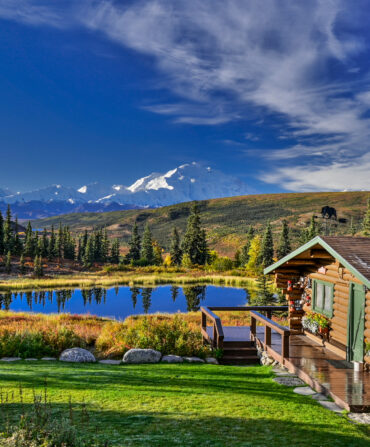The father of landscape architecture, Frederick Law Olmsted made his mark across the country, from Central Park in New York City to the U.S. Capitol Grounds to Stanford University in Palo Alto, California. But Olmsted left his final fingerprints on the South.

Photo: Library of Congress
From left: A portrait of Frederick Law Olmsted; his design of the Biltmore Estate included a recreational lawn game area.
Olmsted’s crowning achievement was designing the sprawling grounds of the Biltmore Estate in Asheville, North Carolina, which he worked on throughout the late 1800s before his death in 1903. His design includes a winding three-mile approach road that weaves visitors past a working farm, formal gardens, a bass pond, and maintained woodlands. “The Biltmore was really the heir to all of his experiences,” says George Briggs, executive director of the North Carolina Arboretum in Asheville. “Olmsted had such a meandering path—he had so many jobs and he was a world traveler, but the Biltmore was the last project he undertook at the culmination of his career.”

Photo: Courtesy North Carolina Arboretum
An aerial view of Biltmore House and the formal gardens c. 1950.

Photo: Courtesy North Carolina Arboretum
The winding Approach Road at the Biltmore passes through a forest of white pines, hemlocks, tulip trees, oaks, maples, and dogwoods.
Olmstead completed 500 projects in his lifetime, many of which are still enjoyed today, including the park system of Louisville, Kentucky; Sudbrook Park near Baltimore, Maryland; the Pinehurst village in North Carolina; and of course, the Biltmore, where he dreamed of creating another impressive landscape—the most comprehensive research arboretum in the country. His vision was finally realized in 1986 with the establishment of the 434-acre North Carolina Arboretum inspired by his plans.

Photo: COURTESY NORTH CAROLINA ARBORETUM
Rhododendrons line a creek at the North Carolina Arboretum.
“He completed the design for it in the 1890s,” Briggs says, “but it’s fair to say that one of his great disappointments was he was unable to complete the arboretum.”
Now, he’s even more a part of its legacy. Last week, the arboretum honored Olmsted by unveiling a special piece of art—an eight-foot-tall bronze statue that stands in the Blue Ridge Court backed by views of the Pisgah National Forest.

“We brought the sculptor, Zenos Frudakis, in to help with the site selection, and we all knew we wanted the mountain backdrop of the Southern Appalachians,” Briggs says. “The sculpture is designed to be larger-than-life but approachable: Olmsted has been viewed as an historical figure, but we want to bring his influence into the present.”








